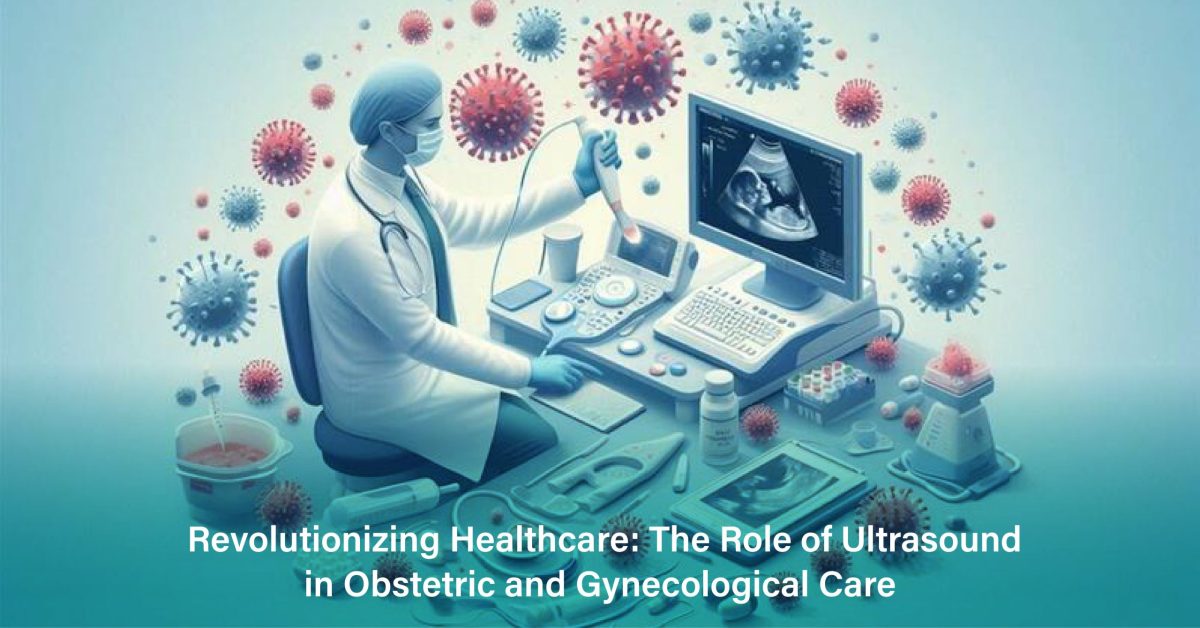Introduction
Presently, technology is the most significant facilitator for the advancement of patient care, diagnosis, and treatment in the contemporary health sector. Amongst these instruments that are revolutionizing in medical practice is ultrasound technology, especially in obstetric and gynecological treatment. Healthcare professionals make use of ultrasound in diagnosis, as an imaging technique which is non-invasive, thereby diagnosing gynecological disorders and knowing more about the health condition of expectant moms and their unborn children. In this regard, the diagnostic value of ultrasonography has improved over time and, therefore, becomes an absolute tool in obstetrics and gynecology.This blog explores how ultrasound transforms maternity care, how portable handheld devices are made, and how the health professionals are to be trained with accuracy as well as accessibility. All this has enhanced the quality of care, making it possible to identify anomalies early on and enable the health of the mother and fetus to become better.
The Evolution of Ultrasound in Obstetric Care
From being utilized merely for medical diagnosis, ultrasound has really evolved. Originally used only for simple prenatal imaging, today it has become the most important tool for determining developmental abnormalities and evaluating the health of a fetus that helps doctors and their patients make informed decisions regarding appropriate care for the mother. Again and again, research has demonstrated just how helpful ultrasonography can be to diagnose congenital anomalies such as spina bifida, heart problems, and chromosomal diseases. Such disorders can be screened early and identified, so medical practitioners can provide timely therapies, lowering morbidity and mortality among neonates.
Advances in ultrasound technology, such as portable and handheld ultrasound equipment, have made such devices more widely available, even to the limited-resource settings. This advance allowed medical professionals to reach out to people located in underserved areas and scattered locations and perform essential tests there, rather than expecting the patient to travel long distances to avail of specialist care. This kind of device, such as the Handheld Ultrasound System (HH USD), is utterly indispensable in places otherwise with limited access to expensive ultrasound equipment.
Point-of-Care Ultrasound (POCUS) in Geriatric Patients
It has also been discovered to be utilized heavily in geriatric care. Though it is more commonly associated with obstetric care, ultrasound technology is much more common these days. The rapid availability of findings has improved patient outcomes and diagnostic accuracy that utilize point-of-care ultrasonography, or POCUS. It allows doctors to rapidly and accurately scan patients with bedside ultrasound POCUS. A geriatric patient group study indicated that indeed POCUS was helpful in identifying recurrent problems such as cystic lesions, congestion of the hepatic veins, and ascites. POCUS allows early determination of these diseases so that treatment may be initiated right away without subjecting the patients to the rigors of testing procedures. The increasing age of the population should be expected to increase the demand for POCUS, and this makes one recognize one of the key advantages of ultrasound technology-that it can be applied in a variety of settings.
